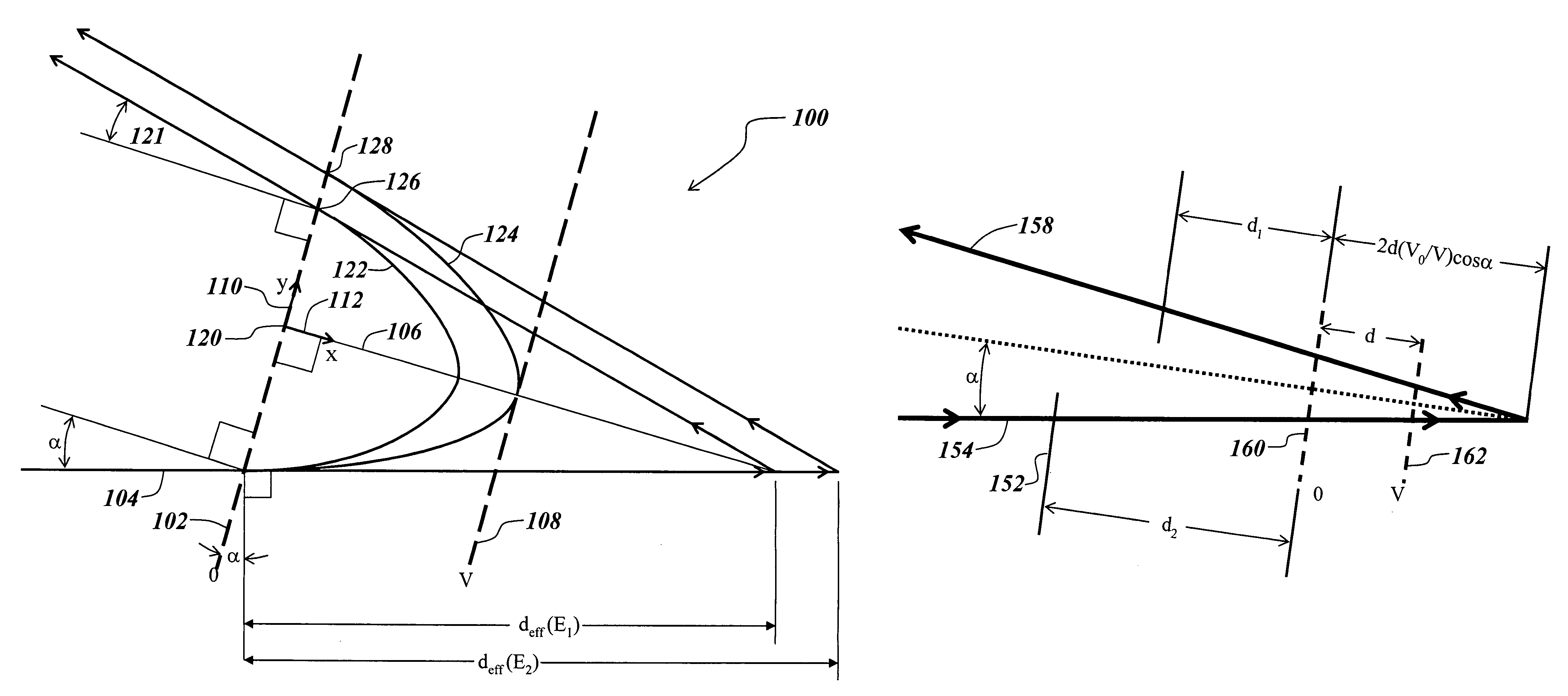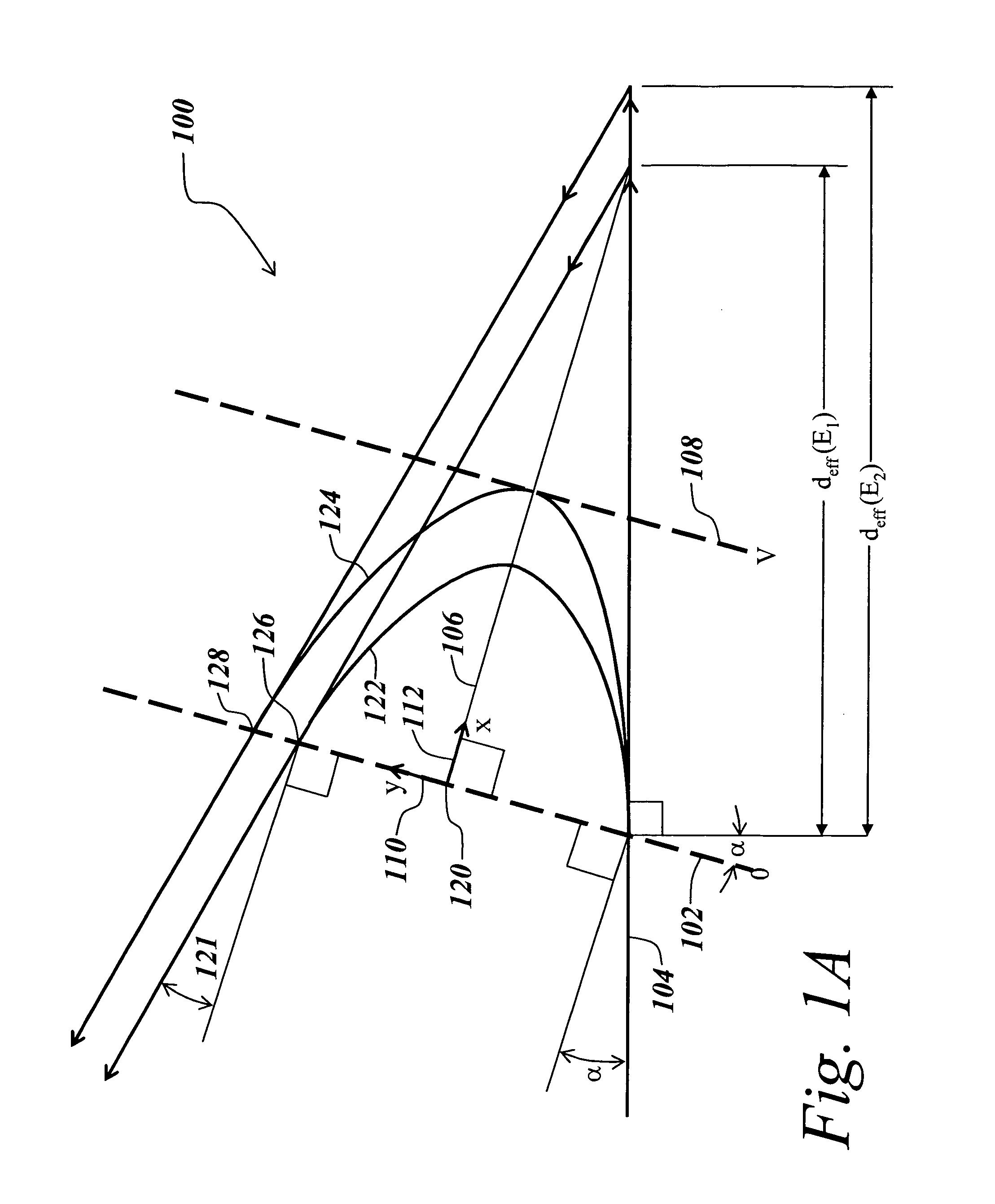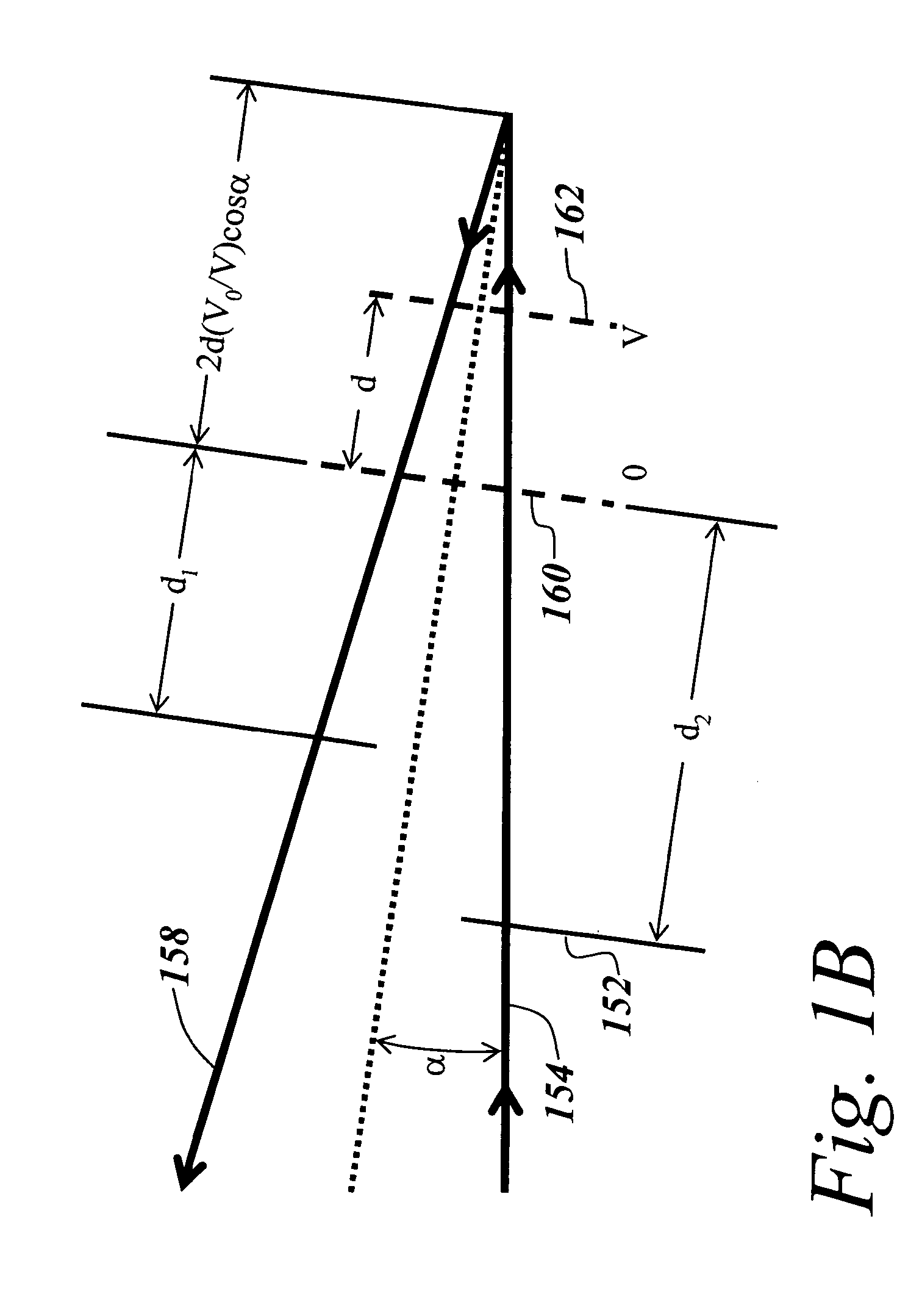Ion optics systems
a technology of optics and ion optics, applied in the field of ion optics systems, can solve the problems of limiting the resolution of a tof mass analyzer, performance of tof mass spectrometer instruments, and limiting the resolving power
- Summary
- Abstract
- Description
- Claims
- Application Information
AI Technical Summary
Benefits of technology
Problems solved by technology
Method used
Image
Examples
example 1
TOF Measurements
[0115]This example presents experimental data obtained with the above modified 4700 Proteomics Analyzer operated as a TOF mass analyzer in “unmodified 4700 Proteomics Analyzer” operational mode and in a mode utilizing the inserted ion optics system 1200. In FIGS. 13A-16B, unmodified 4700 Proteomics Analyzer operational mode data is noted as “4700 Linear Spec.” and data for operation in a mode utilizing the inserted ion optics system 1200 is noted as “4700 Reflector Spec.” These data were obtained with the ion detector placed at approximately the location of the timed-ion-selector in the unmodified 4700 Proteomics Analyzer.
[0116]FIGS. 13A-D compare MALDI-TOF measurements of a matrix dimer (m / z 379.1) taken for two different laser fluences; low, (FIGS. 13A, 13B) and high (FIGS. 13C,13D); and compares spectra obtained in “unmodified 4700 Proteomics Analyzer” operational mode (FIGS. 13A, 13C) to that for operation in a mode utilizing the inserted ion optics system 1200 (...
example 2
TOF-TOF Measurements
[0121]This example presents experimental data obtained with the above modified 4700 Proteomics Analyzer operated as a TOF-TOF mass analyzer in a “4700 Proteomics Analyzer” utilizing the inserted ion optics system 1200. In TOF-TOF operational mode (or MS / MS mode) ions are selected for the second stage of analysis using the timed ion selector of the 4700 Proteomics Analyzer.
[0122]FIGS. 17A and 17B depict a molecular ion region of MALDI-TOF mass spectra for a mixture of three synthetic peptides: APLAVGATK (m / z 827.5; Sequence ID No. 1); AVLAVGATK (m / z 829.5; Sequence ID No. 2); and ATLAVGATK (m / z 831.5; Sequence ID No. 3). In FIG. 17A the timed-ion-selector is set to transmit a relatively broad m / z range so that the precursor ions for all three peptides are transmitted and in FIG. 17B the timed-ion selector is set to transmit the m / z value 827.5.
[0123]FIGS. 18A and 18B depict the complete spectra, including the fragment ions, for the spectra depicted in FIGS. 17A an...
PUM
 Login to View More
Login to View More Abstract
Description
Claims
Application Information
 Login to View More
Login to View More - R&D
- Intellectual Property
- Life Sciences
- Materials
- Tech Scout
- Unparalleled Data Quality
- Higher Quality Content
- 60% Fewer Hallucinations
Browse by: Latest US Patents, China's latest patents, Technical Efficacy Thesaurus, Application Domain, Technology Topic, Popular Technical Reports.
© 2025 PatSnap. All rights reserved.Legal|Privacy policy|Modern Slavery Act Transparency Statement|Sitemap|About US| Contact US: help@patsnap.com



